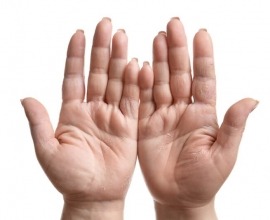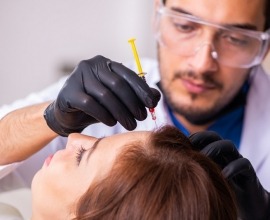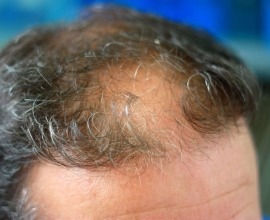Get to Know Your Hair
Understand the components that make up the hair shaft
Every hair shaft originating from a mammal comes with three main components, the cuticle, cortex and medulla. As we grow older the central component of our hair, the medulla, grows stronger and thicker, to explain the central difference in texture between the hair of a baby versus that of an adult. If you deal with split ends, chances are that this inner medulla core has weakened.
The majority component of all hair is encapsulated in the cortex, which is formed by cells that contain protein and melanin granules. Each one of these cells is a complex matrix of spindle-shaped fibrous structures, crystalline protein and filaments that coil together to make a crystalized bond we call keratin.
Imagine now the scales of a pangolin or the shingles on a roof. The cuticle offers a hair protection in much of the same way that shingles protect the inner part of a house from rain. The cuticle is chemically resistant and built up with about five layers of keratinocyte scales. For some ethnicities where thicker hair is a dominant feature, there are more than five layers and, in others, even less than five. Having fewer layers in the cuticle unfortunately leads to breakage-prone hair.
It is well understood that hair straightening breaks the natural keratin structure of hair, while high pH product and chemical use may splinter or crack the cuticle sheath of your hair. This is why it is so important to find a hair stylist that carefully follows product guidelines and handles hair gently after exposing it to chemical treatments.

Notice how your skin and hair reacts to your shampoo
Most shampoos on the market are unfortunately composed of nearly 30 ingredients, which can overwhelm someone if they wish to compare brands or products based on those ingredient lists. However, it may help to remember that these lists comprise of only four categories: cleansing agents, stabilizers or additives, conditioning agents and special care ingredients. These ingredients either:
-
Cleans the hair of dirt, product and sebum buildup
-
Improve the stability or overall ease of use of the product
-
Increase softness, gloss and decrease the amount of tangled or flyaway hairs
-
Limit dandruff and greasy scalp issues
If your shampoo has an inadequate formula best fit for your hair, it can lead to attrition, aggravation and an overall breakdown of the protein within your hair. Although shampoos are generally considered safe products, some of them may cause mild to severe contact dermatitis. Common allergens in shampoos include:
-
cocamidopropyl betaine
-
methylchloroisothiazolinone
-
propylene glycol
-
vitamin E (tocopherol)
-
parabens
-
benzophenones
-
formaldehyde-releasing preservatives such as imidazolidinyl urea and diazolidinyl urea
Signs of an allergic reaction, even if mild, include itchiness, dryness, redness, bumps or tenderness in the areas that come into contact with your shampoo.
Mineral and vegetable oils can help sustain healthy hair
The repeated hydration, swelling and drying of hair can damage it over time. The technical term for this is actually called hygral fatigue. So, if you shower often and/or are an avid swimmer, know that a little oil coverage can actually fill in the gaps between the cuticle layers to reduce the damaging effect of repeated washings and overpenetration of shampoo surfactants.[1]
Our clinic has specialists in hair extraction and transplantation, plus we give expert guidance to maintain the health of your hair. With reasonable prices and quality care, we want to make sure that you leave as a happy customer.
[1] Dias, Maria Fernandareis Gavazzoni. “Hair Cosmetics: An Overview.” International Journal of Trichology, vol. 7, no. 1, 2015, pp. 2–15., doi:10.4103/0974-7753.153450.














